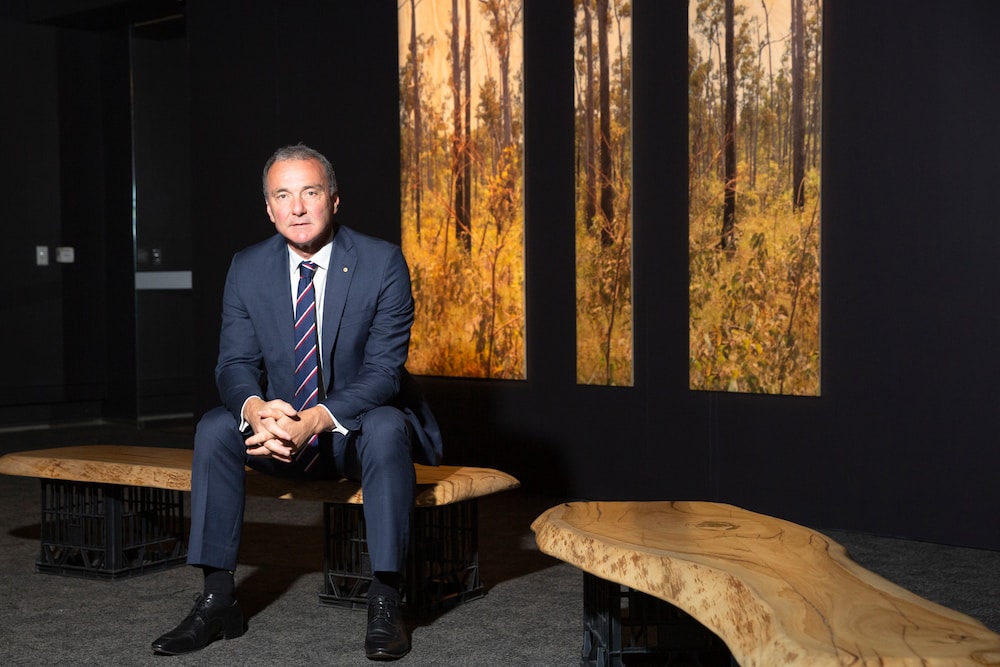The National Museum of Australia’s new exhibition is a physical and aural exploration of the yidaki that breaks convention from a typical museum display.
Open from today, Yidaki: Didjeridu and the Sound of Australia is filled with immersive soundscapes and film installations; less visual and text-based, instead an aural and physical experience.
Museum director Dr Matthew Trinca said “it’s the sounds that make” Yidaki.
“You go to most exhibitions and it’s about what you see and what you read, that’s a sense of value that you take from being in a more traditional exhibition,” he said.
“In this case, you could almost come into this space, shut your eyes and you would get the richness of being immersed in the sound of yidaki, which really is the sound of Australia.”
The exhibition includes vibrating musical platforms called thunderboards, where visitors can feel the rhythms of the yidaki as they watch video of them being played.
Accompanying the soundscapes and videos are 20 key objects displayed in a dimly-lit, stringy bark forest setting.
Yidaki was developed with the Yolngu people of Northeast Arnhem Land.
Not all didjeridu are yidaki, which specifically refers to those instruments made by the people of Arnhem Land, one of the spiritual homes of the making and playing of the instrument.
Yidaki also features didjeridu from outside Arnhem Land.
“Across northern Australia, the playing of the didgeridoo and indeed the yidaki is fundamental to an expression of about cultural meaning and expression in that place,” Trinca said.
“For all Australians now, it is something we are fortunate to share in.
“This is comparable and indeed exceeds other great traditions of cultural endurance around the world and we should be proud of this.”
A celebrated national cultural icon, Trinca said the reason the yidaki has such a profound resonance within the global world music tradition is due to how closely tied it is to the Australian landscape.
“When you see something or hear something that is deeply tied to place in the way that the yidaki is tied to this landscape, there’s something very special that people recognise in that,” Trinca said.
“Whenever we look at human experience around the world, when we can see the intimacy of that link between an object and place, I think we’re all touched by that.”
The exhibition was developed by the South Australian Museum and comes to Canberra after touring Australia and Japan.
“We were so impressed by the ideas that they brought together and the work they were doing with the Yolngu to make an exhibition that was truly different,” Trinca said.
Yidaki: Didjeridu and the Sound of Australia is on display at the National Museum of Australia’s Temporary Gallery 25 June to 26 September and is free; click here for more.
For more entertainment:



